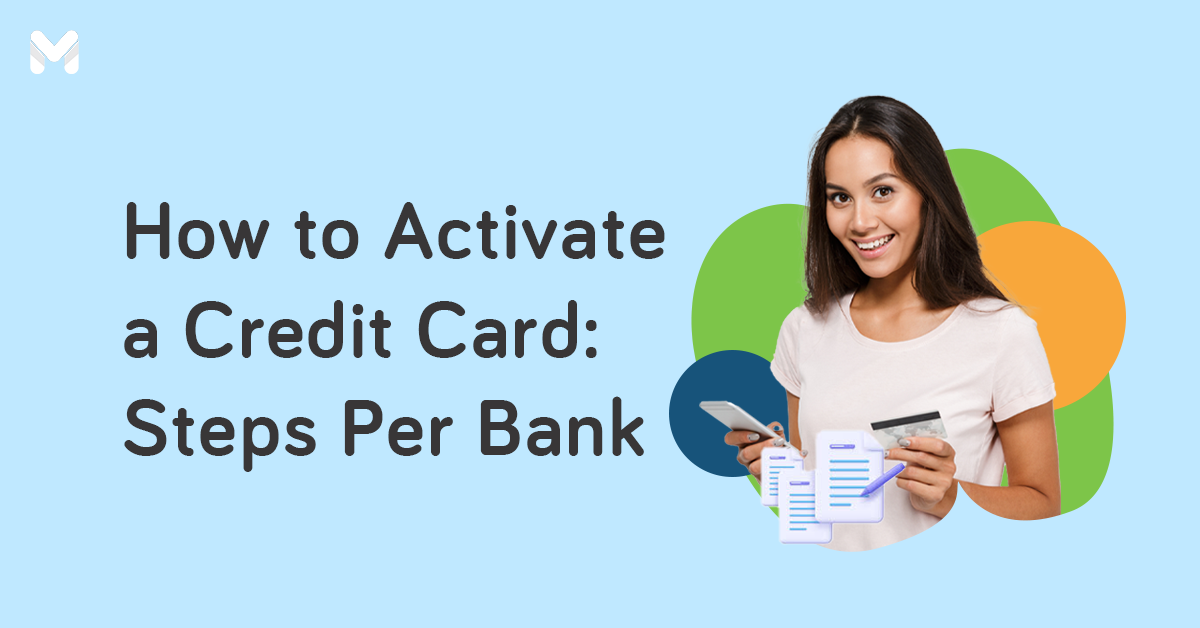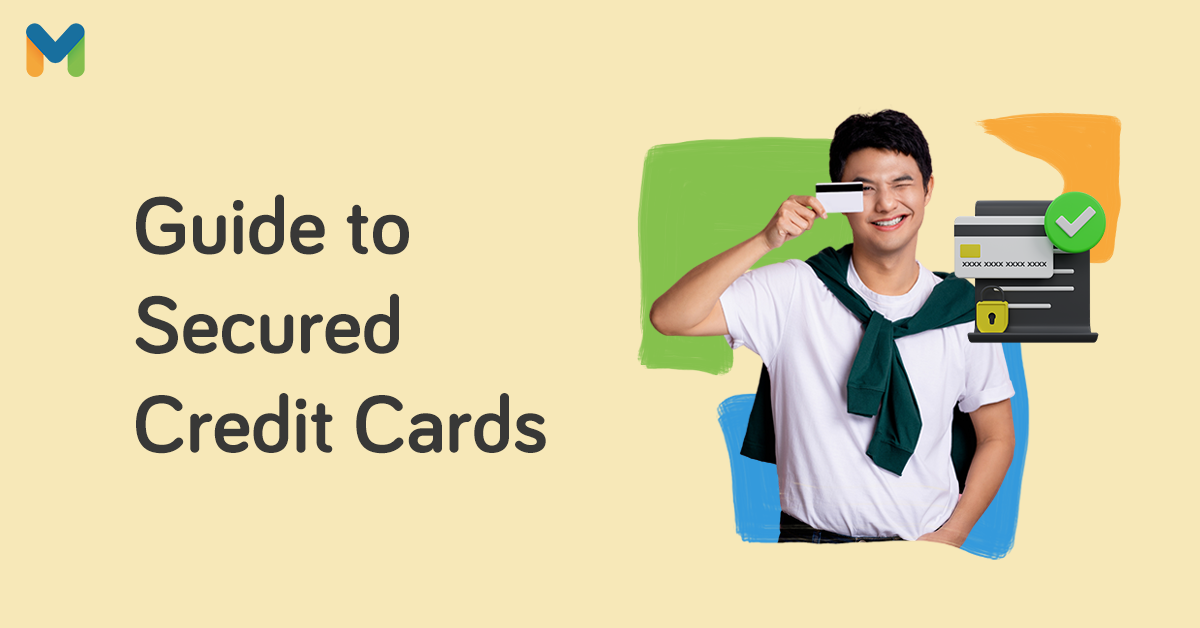As of 2023, cases of credit card fraud in the Philippines are at an all-time low, according to Visa.[1] But that's not an excuse to be complacent—it’s still your duty to stay vigilant and protect yourself from scammers.
To keep fraudsters at bay, you can take a number of precautions, perhaps the most important of which is learning how to use your credit card safely. Read this comprehensive guide so you won’t be a victim of credit card fraud in the Philippines.
What is Credit Card Fraud?
Credit card fraud happens when a fraudster uses your credit card (or debit card) to make purchases or get cash. Technically, it’s a form of identity theft since criminals use your personal information and credentials to initiate transactions.
Examples of Credit Card Fraud in the Philippines
-Oct-11-2023-06-56-50-0367-AM.png?width=636&height=424&name=Pics%20for%20blog%20-%20600x400%20(8)-Oct-11-2023-06-56-50-0367-AM.png)
Banks and credit card networks constantly come up with new features to prevent unauthorized card usage. But fraudsters are creative and resourceful. You need to know their modus operandi so you can protect yourself.
📌 Credit Card Switching
A fraudster convinces a courier delivering credit cards to hand them over. The fraudster creates fake replicas, which are then delivered to the unsuspecting cardholders.
The fraudster is then free to use the legit credit cards. In return, the courier gets a kickback.
📌 Lost Credit Card Fraud
This occurs when a perpetrator uses the card you’ve dropped or misplaced somewhere. It also happens when the fraudster steals the card from you.
Read more: How to Report a Lost Credit Card: Steps and Important Numbers to Call
📌 Account Takeover
The fraudster contacts your issuing bank and uses your personal information to access and change your PINs, mailing addresses, passwords, and other crucial details. Once done, they can then use your card to make unauthorized transactions.
📌 Collusive Merchant
This happens when merchant employees work with fraudsters to defraud banks and customers. They usually swipe the card twice—once through the payment terminal and once through a skimming device that collects all data from the card. They then sell your stolen data to fellow fraudsters on the dark web.
📌 Card-Not-Present (CNP) Fraud
This type of credit card fraud may occur by way of mail, phone, or the internet—as long as the perpetrator knows the account number and expiry date of your card. Your physical card doesn't have to be present unless the merchant requests the card verification code.
Fraudsters may attempt to process a small transaction first to check if the card works. These charges are not that noticeable, but they often signify the start of a major fraud attempt.
📌 Card Replacement Scam
Fraudsters claiming to be bank personnel will notify you via SMS, email, or phone call that you are entitled to a lifetime free membership or an increase in credit limit, or that your credit card has been used for a fraudulent transaction. They'll then ask you to surrender your credit card.
📌 Skimming or Credit Card Cloning
-Oct-11-2023-06-59-57-2612-AM.png?width=638&height=425&name=Pics%20for%20blog%20-%20600x400%20(11)-Oct-11-2023-06-59-57-2612-AM.png)
Fraudsters place skimming devices, which capture data from your card’s magnetic stripe, at ATMs. They might also place a small camera to capture PIN key-ins. Data captured from your credit card will then be printed onto a fake one.
📌 Phishing
Fraudsters will send official-looking emails that look just like legit emails from your bank or credit card company. They'll ask you to urgently update your information via a specified link—or else your account will be deactivated. The goal is to get you to click on the fake link and provide your personal information.
📌 Voice Phishing
Fraudsters will call you and pretend to be someone working for your bank or credit card company. They will trick you into revealing personal information and credit card details over the phone.
📌 SMShing
Perpetrators pose as your bank and ask for your personal information or credit card details via text message. The message normally contains links to a fake landing page where you’ll be prompted to input your login credentials.
📌 Spoofing
To trick you into giving important personal details, scammers create websites that look legit and professionally made. You may stumble upon a spoofed page when you click on a link on an unsecured site. In other cases, links to spoofed websites are included in fraudulent emails and text messages.
📌 SIM Swapping
The criminal gets a hold of your contact details, normally through phishing. They will then impersonate you and contact your mobile service provider to falsely report that your SIM card or phone is lost or damaged.
If the criminal manages to convince the mobile service provider, they'll be given a new SIM with your number reassigned to it. Once the criminal has your mobile number, they can freely use your credit card since they have access to your one-time passwords (OTPs).
📌 Dating Fraud
First, scammers create fake social media or dating site profiles to find victims. Once the romantic relationship has been established, the scammer will get the victim to share their personal information, such as credit card details, passwords, and the like.
How Do Banks Prevent Credit Card Fraud?
Credit cards come with various safety features that provide protection for cardholders and act as deterrents for hackers and fraudsters. These include the following:
- CVC (Card Verification Code) - Found on the back of your card, this unique three-digit code validates all of your credit card transactions.
- Hologram - Also typically found on the back of your card, this sticker confirms its validity. Since it's a layered three-dimensional image, it's harder for fraudsters to replicate.
- EMV (Europay, Mastercard, and Visa) - This microchip embedded in your card generates a single-use code for every transaction, preventing fraudsters from stealing data.
- Two-factor authentication - Use an OTP to further authenticate transactions via text or email.
- Transaction alerts - Get notifications for every transaction so that you can monitor ones you didn't make, if any.
- Credit card lock and transaction limits - Using your provider's app, control when and where you can use your card and limit the amount of transactions. This helps stave off fraudulent transactions should you lose your card.
Read more: Anatomy of Plastic Money: 13 Credit Card Parts You Should Know
What Should You Do to Prevent Credit Card Fraud?
-Oct-11-2023-07-02-07-2289-AM.png?width=638&height=425&name=Pics%20for%20blog%20-%20600x400%20(12)-Oct-11-2023-07-02-07-2289-AM.png)
However, all these features don't mean you should stop being careful. Follow these tips to avoid being a victim of credit card fraud:
✔️ Opt for Branch Pickup
Did you get approved for your credit card application? Instead of getting it delivered, see if you can pick it up at your chosen branch yourself. This way, your credit card won't fall into the wrong hands.
✔️ Sign Your Credit Card
Merchants check the affixed signature on the back of the credit card as a security precaution. The signature on the credit card should match the signature on the sales receipt.
✔️ Consider Your Credit Card as Important as Cash
It may be plastic, but it's good as cash. Keep it secure inside your bag or wallet. Credit card fraud happens when you let your card out of your sight or let your guard down.
✔️ Don't Put All Your Cards in One Location
In theory, keeping all your essentials in one place—such as a wallet—is good practice, but what if you misplace it? If you own several credit cards, bring just one with you and keep the rest safe at home. Should you lose your wallet, you have only one credit card to report.
✔️ Shred Anything With Your Credit Card Information On It
While most fraudsters aren’t quite as intrepid, some are perfectly willing to go dumpster diving for old credit card billing statements. Shred your statements once you’re through with them. If you want to hold on to them for record purposes, make sure they aren’t easily found.
✔️ Don’t Sign Blank Receipts
If you get a credit card receipt with blank spaces, strike through those spaces, or write ₱0 on the space before signing. This means you do not authorize any further transactions other than the one already carried out.
✔️ Check Your Credit Card Statements
You can spot any fraudulent or unusual activity on your credit card and report it to your bank immediately. Fraudsters don't always make huge and noticeable transactions at first. But they will keep using your credit card until you check your credit card balance, report unauthorized transactions, and block the card.
Read more: Credit Card Statement Explained: What is It and How to Read It?
✔️ Be Wary of Phone Transactions
If someone claims to be calling on behalf of your bank, do not engage. Banks will not call and ask for your personal information unless you initiate the call yourself.
✔️ Don't Lend Your Credit Cards
As the cardholder, you are its only authorized user. If someone with ill intent borrows your credit card, they can get all your card information and use it for their personal gain.
✔️ Keep Your Credit Card in View When Paying
Never lose sight of your credit card, especially when paying at restaurants, supermarkets, or gas stations where you usually hand off your card to the cashier. Make sure your credit card is swiped correctly. Check if there are no other unnecessary items on the counter or people who can capture your PIN or credit card info.
✔️ Never Post Card Details Online
You never know who's lurking on your social media feed, so don't post your personal and financial information. Remember that fraudsters are very good at finding missing digits on credit cards, guessing credit card expiry dates, and locating credit card issuer ID numbers.
✔️ Only Shop at Trustworthy Websites
Shop only at websites that show the gray padlock symbol (Site Identity button) to the left side of the address bar. This means everything is encrypted and you are connected securely to the website.
A gray padlock with a yellow triangle warning or a red strike over it means you should not send sensitive personal information on the site because the site is only partially encrypted.
✔️ Review App Permissions on Your Mobile
Check your mobile app permissions one by one. Delete apps whose privacy and security policies don't make sense.
Regularly perform a scan for viruses and other vulnerabilities on your device. While you're at it, invest in legit protection software for your gadgets as well.
✔️ Use Your Card Only at Trustworthy Locations
Use your card only at ATMs and other locations that are secure and trustworthy. For instance, it’s wiser to use an ATM inside a mall compared to an external ATM without a security guard in sight. Malls and reputable stores use EMV technology to keep hackers from using skimming devices.
✔️ Avoid Using Public Wi-Fi
Public Wi-Fi is not recommended for financial transactions. Since it’s not secure, hackers may use it to access your sensitive data.
Should you need to accomplish a finance-related task in a public space, switch to your mobile internet. Make sure you’re doing it within a private area. If possible, just wait until you get home.
✔️ Never Share Your CVC
The CVC (also called CVV) is the three-digit number that proves you have the card with you. When making an offline purchase, be wary of retailers that request your CVC. You should never give them this number since they have no reason to ask for it.
Read more: What is the CVV on a Credit Card and How to Keep It Safe?
✔️ Destroy Your Expired Physical Card
If your credit card expires, don’t just throw it away. You have to destroy it until the numbers are no longer recognizable or the chip is badly damaged. Just be careful as the plastic can be quite tough.
What to Do If You’re a Victim of Credit Card Fraud
-Oct-11-2023-07-03-57-8005-AM.png?width=641&height=427&name=Pics%20for%20blog%20-%20600x400%20(13)-Oct-11-2023-07-03-57-8005-AM.png)
If you think you’re a victim of credit card fraud in the Philippines, you need to keep the criminal from wreaking further havoc. Do these immediately:
❗ Call Your Bank ASAP
Tell the banking representative you’ve noticed irregular transactions. The bank may cancel the existing card and mail you a new one with a different account number, CVV, and expiration date. The bank will then conduct an investigation.
While waiting, check if your mobile banking app allows you to lock your credit card account. That way, you can prevent further transactions.
❗ Report the Case to the Proper Authorities
Identity theft is a serious crime. So how and where to report credit card fraud in the Philippines?
Thankfully, the Philippine National Police (PNP) accepts complaints of this nature via its Anti-Cybercrime Group. Here are the department’s contact numbers:
- Telephone Number: +63 (8) 723-0401 local 7491
- Smart/Viber: +63 961 829 8083
❗ Change Your Login Credentials
Once you realize you’re a victim of credit card fraud, exercise heightened caution.
If you have other credit card accounts, check for any irregularities and inconsistencies in your records. Lock them for the time being. You should also change your account usernames and passwords.
❗ Check Your E-Commerce Accounts
Did you save your credit card info on online shopping websites? In the event of credit card fraud, you need to check if your e-commerce accounts have been compromised as well.
It's best to assume that they might have also gotten hold of your other login credentials. Change all the usernames or passwords of your e-commerce and social media accounts. Include your email as well.
❗ Enable Your Bank App’s Notification Feature
Now that you’ve experienced how bad credit card fraud and identity theft can get, stay extra vigilant to keep these things from happening again. If your banking app has a transactions alert feature, enable it. Usually, such a feature will let you know that certain transactions have exceeded the credit limit or that a specific purchase was made internationally.
❗ Monitor New Transactions
As soon as your credit card goes missing, you’ll need to monitor new and irregular transactions through your mobile banking app. If you’ve enabled your card’s two-factor authentication, you’ll easily know if someone is trying to use your credit card since the OTP will be sent to your number.
Watch out for these activities even if you’ve already reported the incident to your credit card company.
Read more: Credit Card Dos and Don’ts: What Should You Do and Not Do with Your Card?
What is the Punishment for Credit Card Fraud in the Philippines?
-Oct-11-2023-07-05-31-1814-AM.png?width=639&height=426&name=Pics%20for%20blog%20-%20600x400%20(14)-Oct-11-2023-07-05-31-1814-AM.png)
Under Republic Act (RA) No. 11449, individuals who commit the following acts can receive the harshest penalty of life imprisonment, with a fine of up to ₱5 million:[2]
- Hacking
- Illegal access to ATM and online banking accounts
- Skimming or counterfeiting debit and credit cards
- Producing or possessing software or hardware that can illegally access information
Final Thoughts
Even with banks' security measures, credit card fraud in the Philippines remains an issue. Fortunately, you can protect your credit card data in plenty of ways.
Always think before you click. If an offer sounds too good to be true, it's most likely a scam.
More importantly, do your research. Knowledge is your best defense!
💳 Discover More Credit Card Options via Moneymax
Looking for another credit card? Here are some of your best options in the Philippines:
| Credit Card | Best For | Key Features |
|
UnionBank Rewards Credit Card
|
Rewards
|
|
|
Metrobank Platinum Mastercard®
|
Dining
|
|
|
BPI Rewards Card
|
Beginners
|
|
|
UnionBank Lazada Credit Card
|
Online Shopping
|
|
|
Petron BPI Card
|
Fuel Purchases and Auto Services
|
|
Sources:
- [1] Visa says credit card fraud in Philippines at record low (GMA News Online, 2023)
- [2] RA 11449 (Official Gazette)















